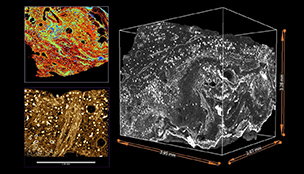Crossref Citations
This article has been cited by the following publications. This list is generated based on data provided by
Crossref.
Witcher, Robert
2018.
Editorial.
Antiquity,
Vol. 92,
Issue. 366,
p.
1419.
2019.
ANNUAL BIBLIOGRAPHY.
Early China,
Vol. 42,
Issue. ,
p.
347.
Qin, Ling
and
Fuller, Dorian Q.
2019.
Prehistoric Maritime Cultures and Seafaring in East Asia.
Vol. 1,
Issue. ,
p.
159.
Witcher, Robert
2019.
Editorial.
Antiquity,
Vol. 93,
Issue. 368,
p.
287.
Zhang, Yekun
Huang, Shengmin
Chen, Weiju
Qin, Fang
Pu, Xiaodong
Wei, Wenheng
Huang, Miaomiao
Wood, Rachel
and
Denham, Tim
2021.
Early Holocene phytolith records for three shell midden sites, Yongjiang River, Guangxi Province, China.
The Holocene,
Vol. 31,
Issue. 1,
p.
95.
Zhang, Xi
Huang, Chao
Zhou, Zhenyu
Olsen, John W.
Huang, Qiang
and
Guan, Ying
2022.
Plant Consumption by Early-Middle Neolithic Peoples in Guangxi, South China: Archaeobotanical Evidence From the Dingsishan Site.
Frontiers in Earth Science,
Vol. 10,
Issue. ,
Wang, Weiwei
Nguyen, Kim Dung
Dang Le, Hai
Zhao, Chunguang
Carson, Mike T.
Yang, Xiaoyan
and
Hung, Hsiao-chun
2022.
Before Rice and the First Rice: Archaeobotanical Study in Ha Long Bay, Northern Vietnam.
Frontiers in Earth Science,
Vol. 10,
Issue. ,
Barron, Aleese
Pritchard, Jeni
and
Denham, Tim
2022.
Identifying archaeological parenchyma in three dimensions: Diagnostic assessment of five important food plant species in the Indo‐Pacific region.
Archaeology in Oceania,
Vol. 57,
Issue. 3,
p.
189.
Zhang, Yekun
Barron, Aleese
Pritchard, Jenifer
Wood, Rachel
and
Denham, Tim
2024.
A microCT assessment of archaeological parenchyma from three riverine shell middens dating to the early Holocene, Yongjiang River Basin, Guangxi, southern China.
Journal of Archaeological Science: Reports,
Vol. 56,
Issue. ,
p.
104553.
Fuller, Dorian Q.
and
Champion, Louis
2024.
Early Pottery Technologies among Foragers in Global Perspective.
p.
169.
